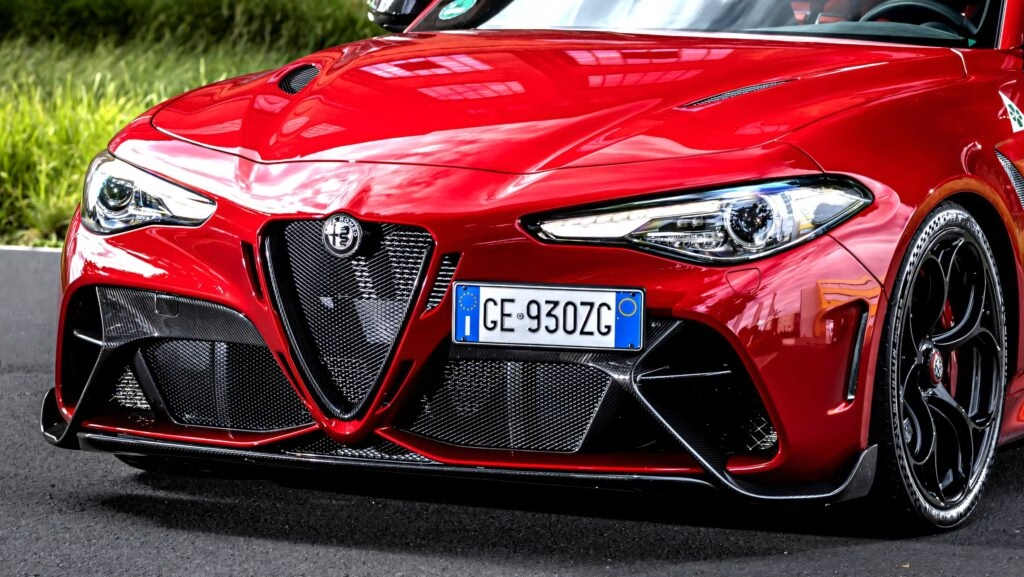Will the Next Alfa Romeo Quadrifoglio Be Electric, Gasoline, or Both?
Alfa Romeo fans are buzzing with one big question: will the next Giulia and Stelvio Quadrifoglio models stick with their soulful gasoline engines, or make the leap to full electric? The answer, straight from Alfa’s top brass, is a bit of both—and that’s a twist few saw coming.
What Powertrain Will Future Quadrifoglios Use?
Alfa Romeo CEO Santo Ficili recently shared that the iconic Quadrifoglio badge isn’t tied to any single powertrain. In his words, “Quadrifoglio can be BEV, why not? But it can also be ICE.” Translation: Alfa’s high-performance flagships could be powered by batteries, internal combustion, or even a hybrid blend. This flexibility is a big deal, especially as other brands draw hard lines in the sand about going all-electric.
Why the indecision? It’s partly about keeping the Quadrifoglio’s spirit alive for diehard fans, many of whom equate Alfa’s magic with the sound and feel of a great engine. But it’s also about hedging bets in a rapidly changing market. According to a 2023 report by the International Energy Agency, EVs made up 18% of global car sales last year, but demand for performance gas models remains strong—especially in enthusiast circles.
How Much Power Can We Expect from the Next Quadrifoglio?
Last year, Alfa’s former CEO teased that the next Stelvio Quadrifoglio could pack up to 986 horsepower if it goes fully electric. That’s supercar territory—think Tesla Model S Plaid or Porsche Taycan Turbo S. But don’t count on every Quadrifoglio hitting that number. If Alfa offers a gasoline or hybrid version, expect a lower output, but likely with the kind of character and engagement that’s made the badge legendary.
It’s worth noting that the new Giulia and Stelvio will ride on Stellantis’s STLA Medium platform, which supports everything from pure EVs to plug-in hybrids and traditional gas engines. This means Alfa can tailor each model to different markets and customer tastes—smart, considering how regulations and buyer preferences are shifting worldwide.
Why Did Alfa Romeo Redesign the Giulia and Stelvio at the Last Minute?
Here’s a behind-the-scenes tidbit: both the next Giulia and Stelvio underwent a last-minute front-end redesign. The reason? To fit the extra cooling hardware needed for gasoline engines. EVs don’t need as much airflow up front, but high-performance ICE models do—especially if they’re going to be flogged on a track. This kind of late-stage engineering isn’t cheap or easy, but it shows Alfa’s commitment to keeping traditional enthusiasts in the fold.
What About a New Alfa Coupe or Spider?
Alfa’s history is packed with gorgeous coupes and convertibles, from the classic Spider to the Brera and 8C. So, will we see a new two-door or drop-top soon? Ficili says it’s possible, but don’t hold your breath. Right now, Alfa’s priority is making sure the next Giulia and Stelvio are hits—financially and with fans. The company is laser-focused on models that can keep the brand healthy in what Ficili calls a “not so clear” period for the industry.
That said, there’s a glimmer of hope. Ficili hinted that future collaborations with Maserati could pave the way for special projects, like a follow-up to the ultra-rare 33 Stradale supercar. If the stars align, Alfa could dip back into its storied past for inspiration. But for now, coupes and spiders are on the back burner.
How Is Alfa Romeo Balancing Heritage with Modern Demands?
Alfa’s challenge is a tough one: how do you keep the brand’s DNA intact while adapting to new tech and regulations? Ficili’s answer is all about balance. He insists that every Alfa must be instantly recognizable—visually and from behind the wheel. That means sharp steering, responsive suspension, and a cockpit that puts the driver in control, not buried under a pile of screens and gadgets.
This philosophy isn’t just marketing fluff. Studies from J.D. Power and other industry analysts consistently show that brand identity and driving feel are major factors for premium car buyers. Alfa’s refusal to chase BMW or Mercedes in sheer sales volume is deliberate. Instead, they’re doubling down on what makes them unique: passion, heritage, and a bit of Italian flair.
Is Alfa Romeo Trying to Become a Mainstream Brand?
Not even close. Ficili is adamant that Alfa Romeo will remain a small, exclusive marque. “We need to keep the customers who are in love with Alfa,” he says, pointing to the brand’s racing pedigree and iconic models. The new Junior crossover is designed to bring in younger buyers, acting as a bridge between fresh faces and the old-school Alfisti. But don’t expect Alfa to start churning out bland, mass-market cars anytime soon.
What’s Next for Alfa’s Special Editions and Legacy Models?
Before the current Giulia and Stelvio bow out, expect a few more special editions—think limited-run colors, unique trims, and maybe some collector-focused tweaks. These models help keep buzz alive and give loyalists something to celebrate as the lineup transitions to its next chapter.
The big takeaway? Alfa Romeo’s future isn’t about picking sides in the electric vs. gasoline debate—it’s about making smarter, more flexible choices. Whether you crave the howl of a twin-turbo V6 or the instant torque of an EV, Alfa wants you behind the wheel. Start with one change this week—maybe a test drive, maybe just a deeper look at what’s coming—and you’ll likely spot the difference by month’s end.

